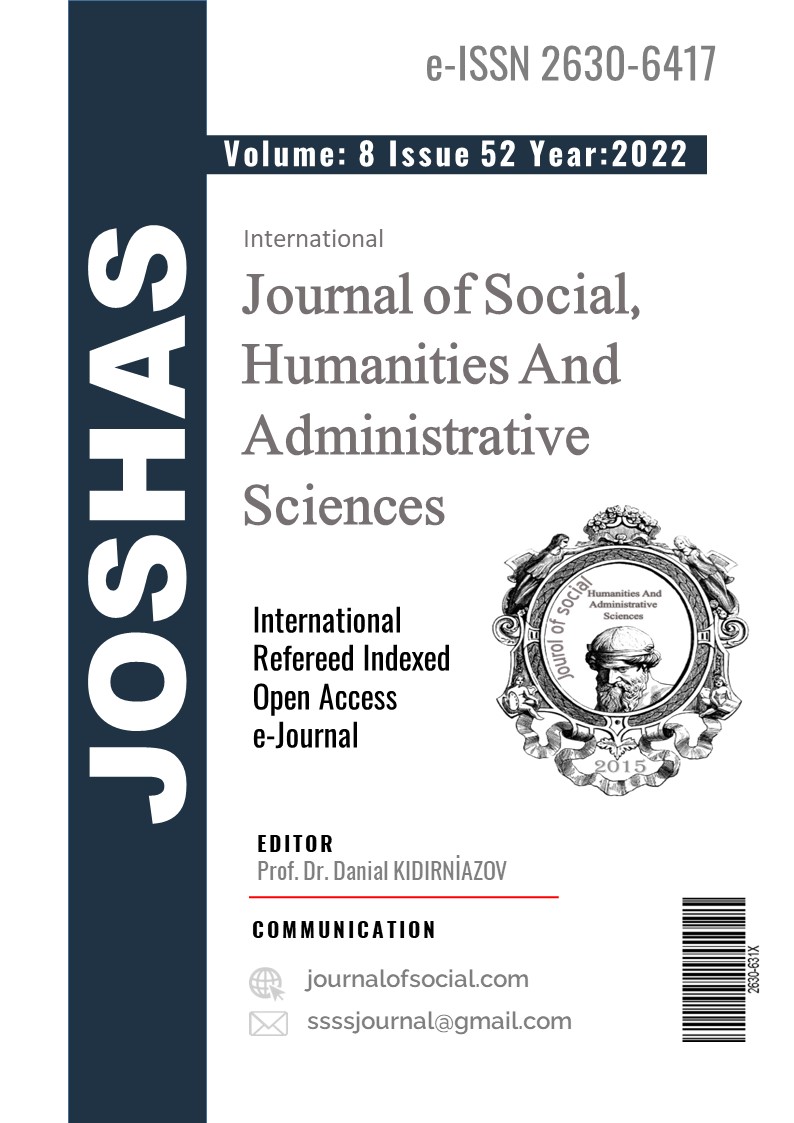Author :
Abstract
Amac: Bu arastirmanin amaci, Amerika`da depresyon, klamidya ve uyuz gibi hassas, es, aile ve arkadaslarla paylasmaktan kacinilabilen saglik sorunlari hakkindaki trendleri arastirmaktir. Saglik hakkindaki endiselerin, gunun hangi zaman dilimlerinde arastirildigi, haftanin hangi gunlerinde daha cok arastirma yapildigi, hangi aylarda arastirmalarin yogunlastigi, hangi bolgelerde yogunlastigi ve ne tur arastirmalar yapildigi incelenmistir.
Yontem: Arastirma verileri halka acik Google arastirma veri tabanindan edinilmistir. Google Trends ve Pytrends API araci kullanilarak elde edilen verilerin sonuclari gorsel grafikler olarak duzenlenmistir.
Bulgular: Elde edilen gorsel grafikler incelendiginde, hassas hastaliklarin arastirma egilimlerinin gunun belirli saatlerinde, haftanin belirli gunlerinde, yilin belirli aylarinda ve cesitli bolgelerde daha agirlikli toplandigi gozlemlenmektedir.
Tartışma: Arastirma, Amerika`daki tuketici arastirma davranislarini inceledigi icin orijinaldir. Yapilan arastirma ile elde edilen sonuclar incelendiginde arastirma uygulayicilar icin yol gosterici niteliktedir. Bu calisma, cesitli hastaliklarin duzenli takip edilmesi sayesinde erken teshislere vesile olabilir. Boylece, bu hastaliklar icin daha iyi tedavi yontemleri bulunmasi ve bu hastaliklar icin onleme metodlari gelistirilmesinde yol gosterici niteliktedir.
Keywords
Abstract
Purpose: The purpose of this research is to deepen the knowledge for America's leading health concerns such as depression, chlamydia and scabies and get insights for when the searches are being made, from where they are being made, and what type of searches are made.
Design/methodology/approach: The primary source for the datasets collected on keywords for depression, chlamydia, and scabies was retrieved using Google Trends and the Pytrends API. All the data collected were publicly available and obtained legally. The primary search for three diseases was conducted on Google Trends for the United States of America.
Findings: It was observed that in a comparative study of the timing of searches of all the three diseases are late nights or early in the morning. Wednesdays have the highest peak in case of searches of the week has the probability of searches more as compared to weekends. Also based on type of searches, it was observed that from January to May there are more searches being conducted.
Discussion: Although data from search results requires advanced technical skills to be retrieved and analyzed, Google Trends data can be used to better understand user behavior. Early tracking of various medical conditions could drive better treatment and prevention methods.
Keywords
- Adawi, M., Bragazzi, N. L., Watad, A., Sharif, K., Amital, H., & Mahroum, N. (2017a). Discrepancies Between
- Adawi, M., Bragazzi, N. L., Watad, A., Sharif, K., Amital, H., & Mahroum, N. (2017a). Discrepancies BetweenClassic and Digital Epidemiology in Searching for the Mayaro Virus: Preliminary Qualitative and QuantitativeAnalysis of Google Trends. JMIR Public Health and Surveillance, 3(4), e93. https://doi.org/10.2196/publichealth.9136
- Asch, J., Marks, J., Klinger, E., Merchant, R., & Asch, D. (n.d.). Google searches for Health. Center for Digital Health. Retrieved February 11, 2022, from https://centerfordigitalhealth.upenn.edu/google-searches-health
- Centers for Disease Control and Prevention. (2021, April 13). National Overview - sexually transmitted disease surveillance, 2019. Retrieved February 11, 2022, from https://www.cdc.gov/std/statistics/2019/overview.htm
- Cherry, G., Rocke, J., Chu, M., Liu, J., Lechner, M., Lund, V. J., & Kumar, B. N. (2020). Loss of smell and taste: anew marker of COVID-19? Tracking reduced sense of smell during the coronavirus pandemic using search trends.Expert Review of Anti-Infective Therapy, 18(11), 1165–1170. https://doi.org/10.1080/14787210.2020.1792289
- Cirruzzo, C. (n.d.). STDs hit record high again, CDC says - US news & world report. Retrieved January 30, 2022, from https://www.usnews.com/news/health-news/articles/2021-04-14/stds-hit-record-high-again-cdc-says
- Cook, S., Conrad, C., Fowlkes, A. L., & Mohebbi, M. H. (2011). Assessing Google Flu Trends Performance in theUnited States during the 2009 Influenza Virus A (H1N1) Pandemic. PLoS ONE, 6(8), e23610. https://doi.org/10.1371/journal.pone.0023610
- Forrester Research. (2006). North American Consumer Technology Adoption Study (NACTAS) Q4.
- Gianfredi, V., Bragazzi, N., Mahamid, M., Bisharat, B., Mahroum, N., Amital, H., & Adawi, M. (2018). Monitoringpublic interest toward pertussis outbreaks: an extensive Google Trends–based analysis. Public Health, 165, 9–15. https://doi.org/10.1016/j.puhe.2018.09.001
- Hogue, J., & DeWilde, B. (2015). PyTrends (4.7.8) [Unofficial API for Google Trends. Allows simple interface for automating downloading of reports from Google Trends]. PyPI. https://pypi.org/project/pytrends/
- Internet live stats. (n.d.). Retrieved January 11, 2022, from https://www.internetlivestats.com/one-second/#google- band
- Kanani*, P., & Padole, D. M. (2019). Deep Learning to Detect Skin Cancer using Google Colab. International Journal of Engineering and Advanced Technology, 8(6), 2176–2183. https://doi.org/10.35940/ijeat.f8587.088619
- KFF. (2020, February 18). KFF Poll: Most Americans Are Unaware of How Common STIs Are Among Adults andThat Rates Are Rising. Retrieved December 15, 2021, from https://www.kff.org/womens-health-policy/press-release/kff-poll-most-americans-are-unaware-of-how-common-stis-are-among-adults-and-that-rates-are-rising/
- Paavonen, J. (1999b). Chlamydia trachomatis: impact on human reproduction. Human Reproduction Update, 5(5), 433–447. https://doi.org/10.1093/humupd/5.5.433
- Rogers, S. (2016, July 1). What is Google Trends data - and what does it mean? Medium. Retrieved February 11,2022, from https://medium.com/google-news-lab/what-is-google-trends-data-and-what-does-it-mean- b48f07342ee8
- Satterwhite, C. L., Torrone, E., Meites, E., Dunne, E. F., Mahajan, R., Ocfemia, M. C., Su, J., Xu, F., & Weinstock,H. (2013). Sexually transmitted infections among US women and men: prevalence and incidence estimates, 2008. Sexually transmitted diseases, 40(3), 187–193. https://doi.org/10.1097/OLQ.0b013e318286bb53
- Steiner, A. Z., Diamond, M. P., Legro, R. S., Schlaff, W. D., Barnhart, K. T., Casson, P. R., Christman, G. M., Alvero,R., Hansen, K. R., Geisler, W. M., Thomas, T., Santoro, N., Zhang, H., Eisenberg, E., & Reproductive MedicineNetwork (2015). Chlamydia trachomatis immunoglobulin G3 seropositivity is a predictor of reproductive outcomesin infertile women with patent fallopian tubes. Fertility and sterility, 104(6), 1522–1526. https://doi.org/10.1016/j.fertnstert.2015.08.022
- Watad, A., Watad, S., Mahroum, N., Sharif, K., Amital, H., Bragazzi, N. L., & Adawi, M. (2019). Forecastingthe west nile virus in the United States: An extensive novel data streams–based time series analysis and structuralequation modeling of related digital searching behavior. JMIR Public Health and Surveillance, 5(1). https://doi.org/10.2196/publichealth.9176
- World Health Organization. (2021, September 13). Depression. Retrieved January 22, 2022, from https://www.who.int/news-room/fact-sheets/detail/depression





